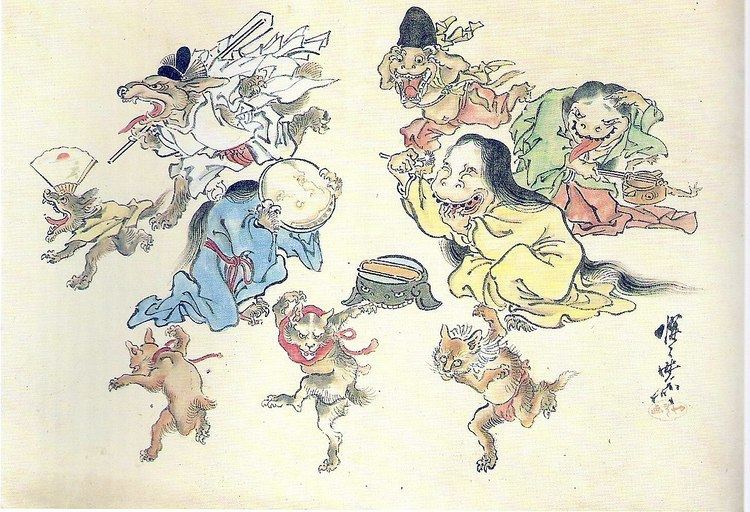 | ||
Hyakki Yagyō, variation: Hyakki Yakō, (百鬼夜行, "Night Parade of One Hundred Demons") is a concept in Japanese folklore. It is a parade which is composed of a hundred kinds of yōkai.
Contents
Definition
Legend has it that "every year the yokai Nurarihyon, will lead all of the yōkai through the streets of Japan during summer nights." Anyone who comes across the procession would perish or be spirited away by the yōkai, unless protected by handwritten scrolls by anti-yokai onmyoji spellcasters. It is said that only an onmyoji clan head is strong enough to pass Nurarihyon's Hyakki Yagyo unharmed.
According to the account in the Shūgaishō (拾芥抄), a medieval Japanese encyclopedia, the only way to be kept safe from the night parade if it were to come by your house is to stay inside on the specific nights associated with the Chinese zodiac or to chant the magic spell: "KA-TA-SHI-HA-YA, E-KA-SE-NI-KU-RI-NI, TA-ME-RU-SA-KE, TE-E-HI, A-SHI-E-HI, WA-RE-SHI-KO-NI-KE-RI" (カタシハヤ, エカセニクリニ, タメルサケ, テエヒ, アシエヒ, ワレシコニケリ).
In literature
The hyakki yagyō has appeared in several tales collected by Japanese folklorists.
In art
The night parade was a popular theme in Japanese visual art.
One of the oldest and most famous examples is the 16th-century handscroll Hyakki Yagyō Zu (百鬼夜行図), erroneously attributed to Tosa Mitsunobu, located in the Shinju-an of Daitoku-ji, Kyoto. For other picture scrolls, the Hyakki Yagyō Emaki (百鬼夜行絵巻), contains the details of each member in the parade from the Muromachi period.
Other notable works in this motif include those by Toriyama Sekien (Gazu Hyakki Yagyō) and Utagawa Yoshiiku. However, Toriyama's work presents yokai in separate, encyclopedic entries rather than assembled in a parade, while Utagawa's Kokkei Wanisshi-ki ("Comical Record of Japanese History") employs the theme of 100 demons to comment on contemporary Japanese military actions in China.
